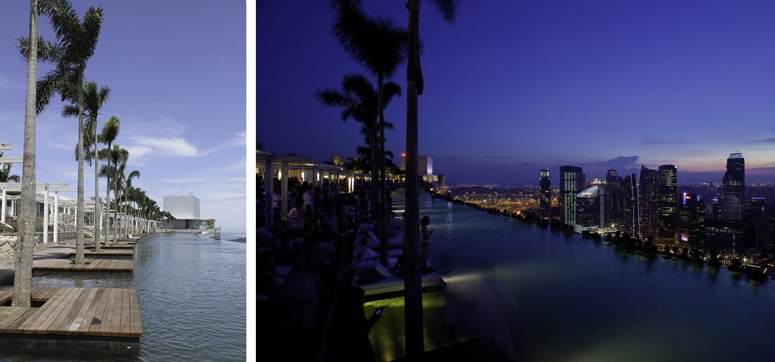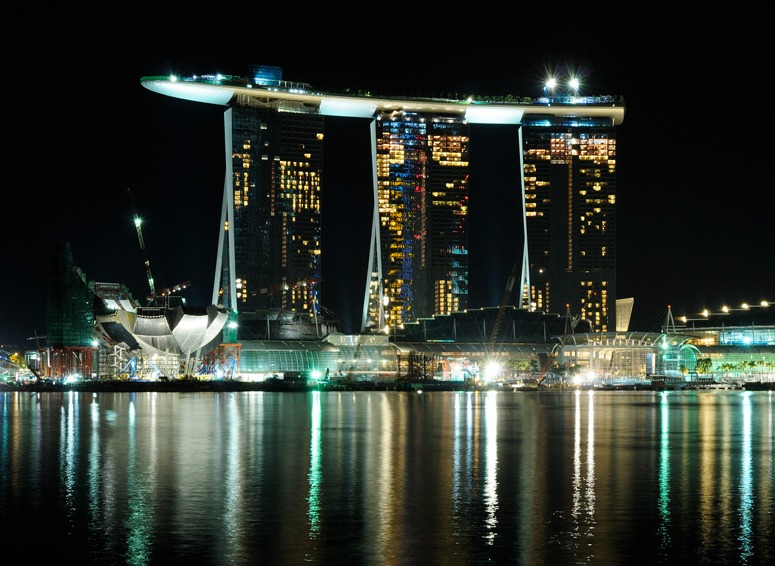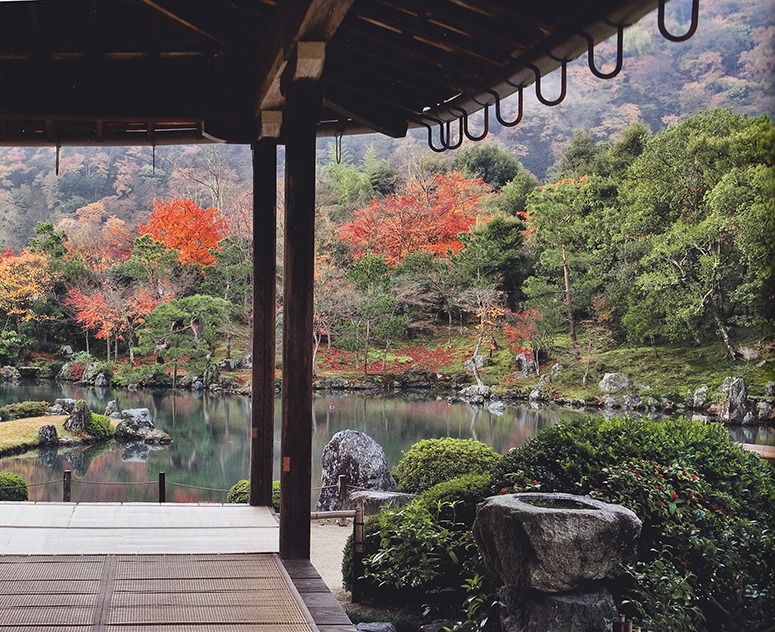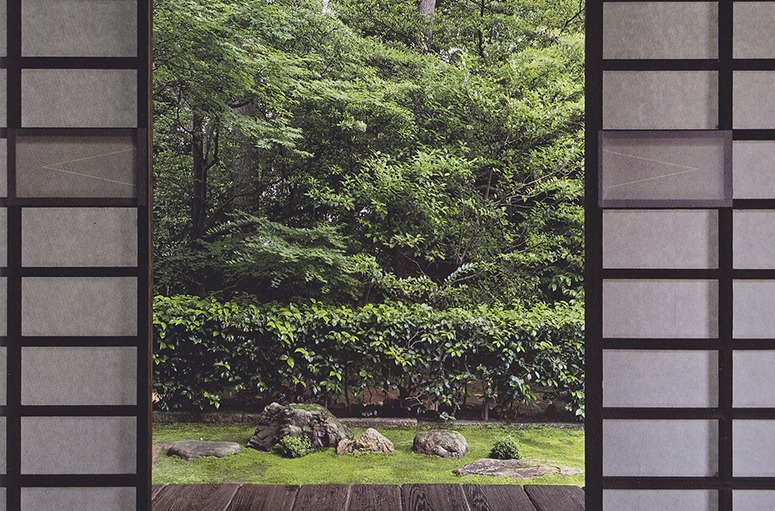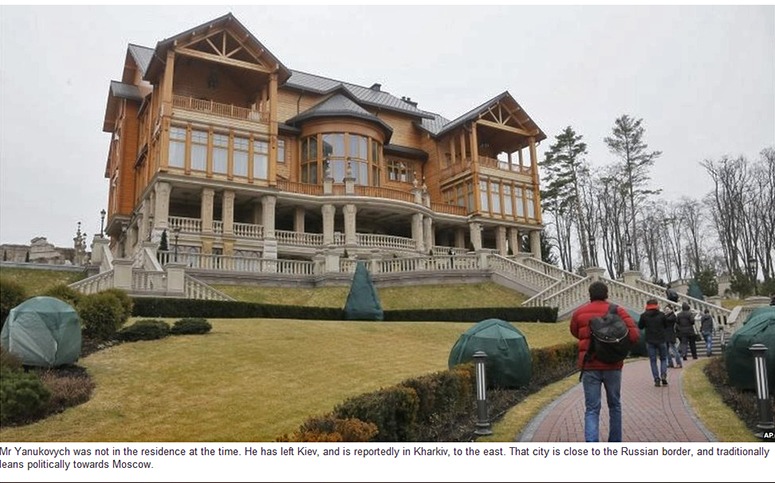What is the difference between a trade and a profession? A Wiki article lists the characteristics of a profession as being present when: (1) an occupation becomes a full-time occupation (2) the establishment of a training school (3) the establishment of a university school (4) the establishment of a local association (5) the establishment of a national association (6) the introduction of codes of professional ethics (7) the establishment of state licensing laws.
I agree but would add that the code of professional ethics should include an element of idealism and altruism. As part of this, it should be the norm for professional people to follow the lawyers’ good example in doing unpaid work for good causes (pro bono). Lawyers have to spend much of their time defending the guilty and protecting the interests of land-and-money-grabbers. I therefore feel good when they do pro bono work and it also makes me happy to see young landscape architects doing volunteer work – as with helping to make a Dragon Garden for the Druk White Lotus School in Ladakh.
Category Archives: Asian gardens and landscapes
Roof SkyPark garden-landscape on Marina Bay Sands Hotel in Singapore
Having proposed a Sky Park for the City of London, I was delighted to see a real Skypark on the Marina Bay Sands Hotel. ‘London talks and Singapore acts’. The Marina Bay Sands Hotel has 2,561 rooms and 55 floors. The SkyPark, 200m above ground level, is larger than three football pitches and has an observation deck, 250 trees and a 150m infinity swimming pool. It is a brilliant project by Las Vegas Sands and, I hope, a signpost to the future of urban form. See the Marina Bay Sands website for more details. I’d like to spend a few nights there, congratulating the hotel management for commissioning the project and then the city of Singpore for its policy of moving from ‘Garden City to Model Green City‘. But a design critic must also provide criticism:
- the garden/landscape design looks ‘OK but dull’. The designers have not risen to the challenge of such a fabulous opportunity, perhaps to re-create some of the rain forest of pre-colonial Singapore with stylised beaches running to the perimeter pool. I wouldn’t even object to a glowing Tarzan by Jeff Koons in the heart of the jungle – and nor would the kids of the guests.
- As built, SkyPark floats somewhere between the deck of a luxury cruise ship and the garden of a luxury hotel – and both are design categories which landscape designers neglect. What the SkyPark needed was a serious dreamland design to lift the imagination of guests, as well as the contents of their wallets. Moshe Safdie was the architect. He worked with five artists but, having written a book For everyone a garden probably sees himself as an expert on garden design. I do not doubt that, like Frank Lloyd Wright, Safdie has the ability to design gardens but as with all the arts, it takes time to develop expertise and one needs to love garden life and garden visiting to succeed. My belief is that Edwin Lutyens’ best gardens were designed in co-operation with Gertrude Jekyll and that Lutyens tended towards vacant formalism when working, like Safdie, on his own. Eero Saarinen had the great good sense to work with Dan Kiley.
- the Tropical Island shape of the SkyPark sits unhappily on its three towers. There is a dash of HG Wells’ War of the Worlds about it. Or an out-or-water oil rig. Looking up, one wonders if a Tsunami left a cruiseliner or a surfboard perched on the roofs of its three towers. The resort hotel may appear more sensitive to its context when more of Singapore’s buildings have SkyParks
- Safdie’s urban design, which I commend but which is not apparent from the photographs, was as follows: ‘A series of layered gardens provide ample green space throughout Marina Bay Sands, extending the tropical garden landscape from Marina City Park towards the Bayfront. The landscape network reinforces urban connections with the resort’s surroundings and every level of the district has green space that is accessible to the public. Generous pedestrian streets open to tropical plantings and water views. Half of the roofs of the hotel, convention center, shopping mall, and casino complex are planted with trees and gardens.
Top photographs courtesy Marina Bay Sands Hotel. Bottom photo courtesy Peter Morgan.
Japanese Zen Gardens by Yoko Kawaguchi and Alex Ramsay Frances Lincoln 2014 – review
This book has excellent photographs, by Alex Ramsay, and the inclusion of garden plans is most welcome. Kawaguchi writes with admirable clarity about Zen gardens – compared to those I have seen of the 1,926 books on Amazon returns for a search on Zen Gardens. Allen Weiss, for example, begins Zen Landscapes (2013) by stating that ‘The essential elements of the dry Japanese garden are few: rocks, gravel, moss’. Kawaguchi explains that this is not how ‘Zen garden’ is used in Japan: it simply means ‘the garden of a Zen temple’ and such gardens are not stylistically distinct from other Japanese temple gardens. So Weiss should have used kare-sansui or dry landscape in his book title. I would also complain if ‘Protestant’ was the adjective used, overseas, for the gardens of eighteenth century England. I therefore recommend Kawaguchi as the first book to read on Zen gardens. Yet there are some critical points to make. First, I would like the introduction to have said more about the principles of Buddhism, the distinct characteristics of Zen Buddhism and the relationship between Buddhism and gardens. Second, the plans lack contours and, to my eye, look too English. Third, I would like the points made to have had bibliographic references. I do not think this would have spoiled the book design and I do not think it would have mattered if the references were to Japanese publications which English readers cannot follow.
Part One of the book gives a historical overview of the gardens made for Japanese Zen temples. The first such temples are dated to the thirteenth and fourteenth centuries (while the first Buddhist gardens in Japan date from the sixth century). The influence of Chan Buddhism, from China, which became Zen Buddhism in Japan, is associated with the Emperor Kameyama. He abdicated at the age of 24, in 1274, and became a Buddhist monk in 1289 and the abbot of Nanzen-ji. Ryoan-ji, which fascinates visitors and provides foreigners with their image of a ‘Zen garden’, is a mystery. Little is known of its date or its symbolism: ‘it is almost as though visitors to the temple have needed to be reassured that the garden is indeed a work of genius rather than a case of humbug’ (p.61). Kawaguchi also discusses the influence of Zen on twentieth century gardens, notably in the work of Shigemori Mirei.
Part Two of the book reviews the symbols and motifs used in Zen gardens. Many have Buddhist roots and many do not. The view from Shinju-an (illustrated below) uses symbols drawn from the beliefs of pre-Buddhist Japan: Shinto. Other symbols come from Daoism and China, including the turtle, the crane and the islands of the immortals.
My view is that it is pity to make either ‘Japanese gardens’ or ‘Zen gardens’ without the understandings of ideas and symbols which Kawaguchi provides. To state a tautology: the gardens of Zen temples are temple gardens.
Urkraine President's palace garden
(Photo BBC)
Persian garden tour April and May 2014 Iran
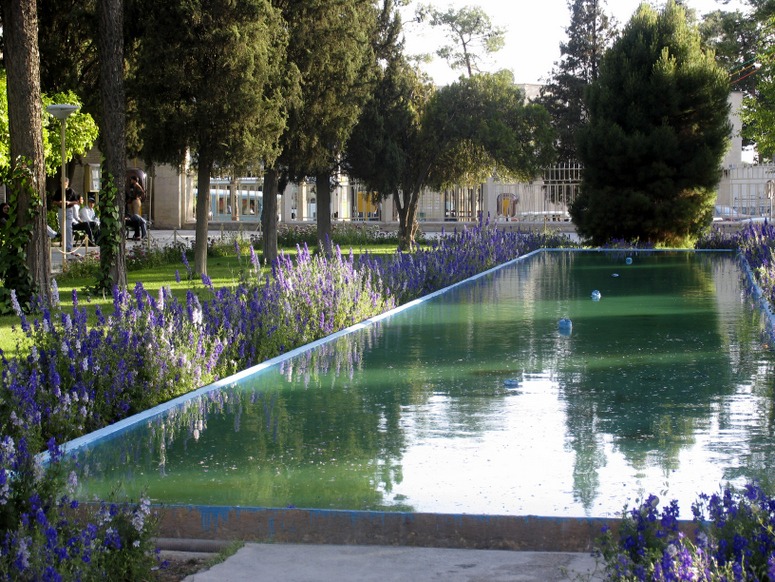 Persian Gardens have a 2500 years history. They overcome environmental constraints and manifest the cultures and beliefs of people living in an often-harsh climate. In collaboration with the Iranian Society of Landscape Professionals (ISLAP) offer a specialized tour and workshop called “Taste Paradise”. This is a unique opportunity for Landscape professionals, architects, botanists and Landscape historians to exchange information with Iranian specialist experts while visiting Persian Gardens. After our very first successful international tour and workshop “Taste Paradise I” in May 2013, The Cultural Landscape Association (CLA) is planning to offer another journeys (Taste Paradise II and III) for experts and professionals all around the globe, to visit and enjoy the cultural beauty of Persian Gardens. You can find More Information here: http://www.shahromanzar.org/component/k2/item/400-tour/%20400-tour#
Persian Gardens have a 2500 years history. They overcome environmental constraints and manifest the cultures and beliefs of people living in an often-harsh climate. In collaboration with the Iranian Society of Landscape Professionals (ISLAP) offer a specialized tour and workshop called “Taste Paradise”. This is a unique opportunity for Landscape professionals, architects, botanists and Landscape historians to exchange information with Iranian specialist experts while visiting Persian Gardens. After our very first successful international tour and workshop “Taste Paradise I” in May 2013, The Cultural Landscape Association (CLA) is planning to offer another journeys (Taste Paradise II and III) for experts and professionals all around the globe, to visit and enjoy the cultural beauty of Persian Gardens. You can find More Information here: http://www.shahromanzar.org/component/k2/item/400-tour/%20400-tour#
The dates are:
Taste Paradise II: April 12-18, 2014
Taste Paradise III: May 03- 09, 2014
Further information on Garden Tours in Iran and on Iranian Gardens:
http://www.gardenvisit.com/gardens/in/iran
http://www.gardenvisit.com/garden_tours/in/iran
Kongjian Yu – landscape architecture as an art of survival
I have praised Kongjian Yu’s work before and much enjoyed his lecture to the HGSD (above). I particularly like his advice to ‘make friends with the flood’ and to design for the ‘integration of contemporary art and ecology’. But I am having doubts about my call for him to be appointed Chief Technical Officer to the The Ministry of Housing and Urban-Rural Development 住房和城乡建设部. For sure, he would be very good at the job – but the landscape architecture profession has greater need of him.
It is bad mannered of me to criticise Kongjian after he quotes me in his lecture, but there are two historical points I would like to correct. First, the history of landscape architecture in east and west can be traced back for thousands of years – though its name is but 185 years old. Second, the planning of western gardens and parks ‘for ornament’ dates from c1700 and is now in decline. Older parks and gardens were always planted for food.
So here is an invitation: next time Kongjian Yu is in London I would be delighted to show him round my local park and the new building for the University of Greenwich Department of Landscape Architecture. Greenwich Park was designed in 1660 primarily for food production – and it still produces a large quantity of food, much of which is collected by ethnic Chinese. So it is very appropriate that the roof of the new school has the production of food as one of its main design aims: it will be used for research into the use of living roofs for food production and other sustainable purposes.

